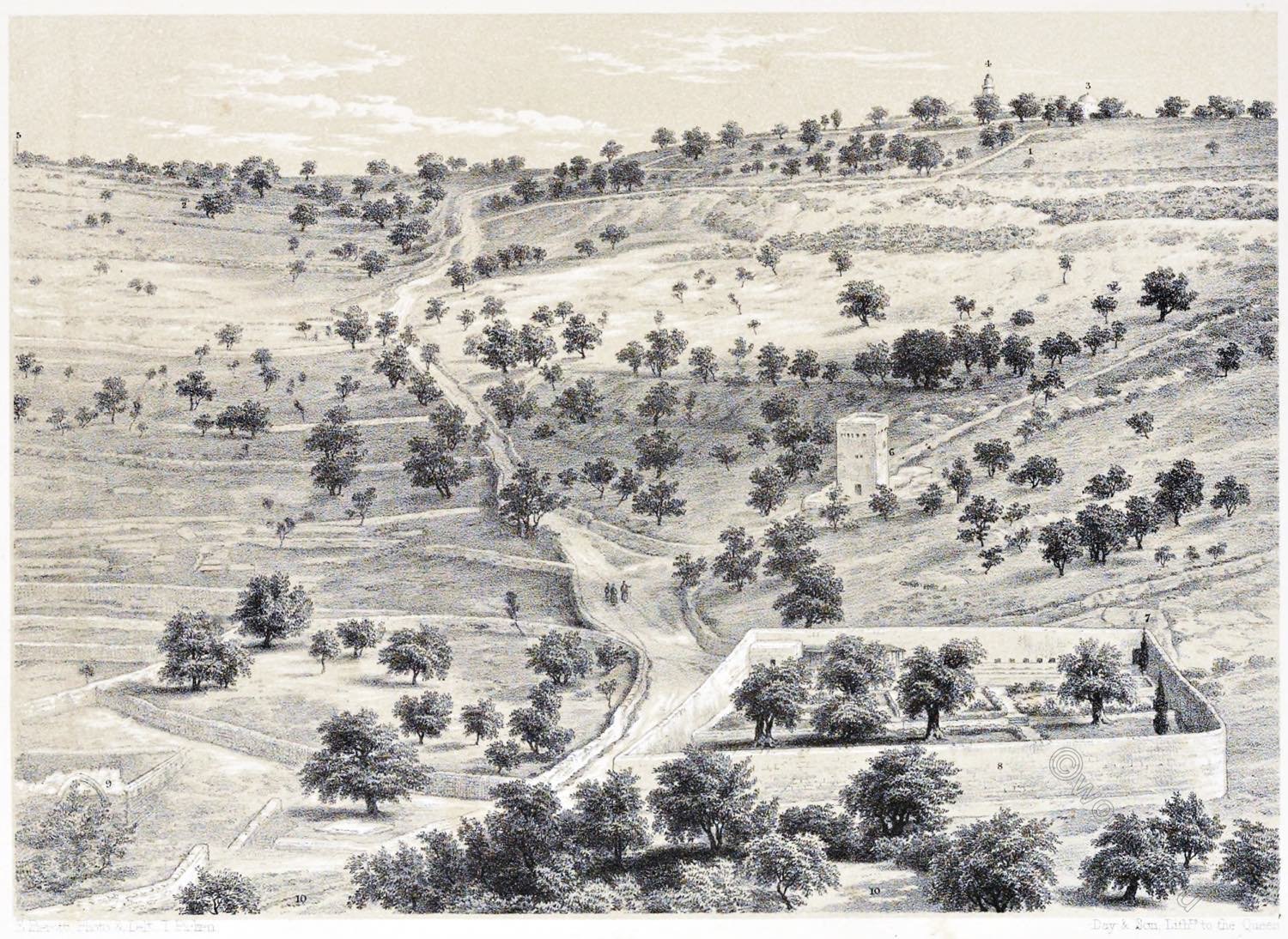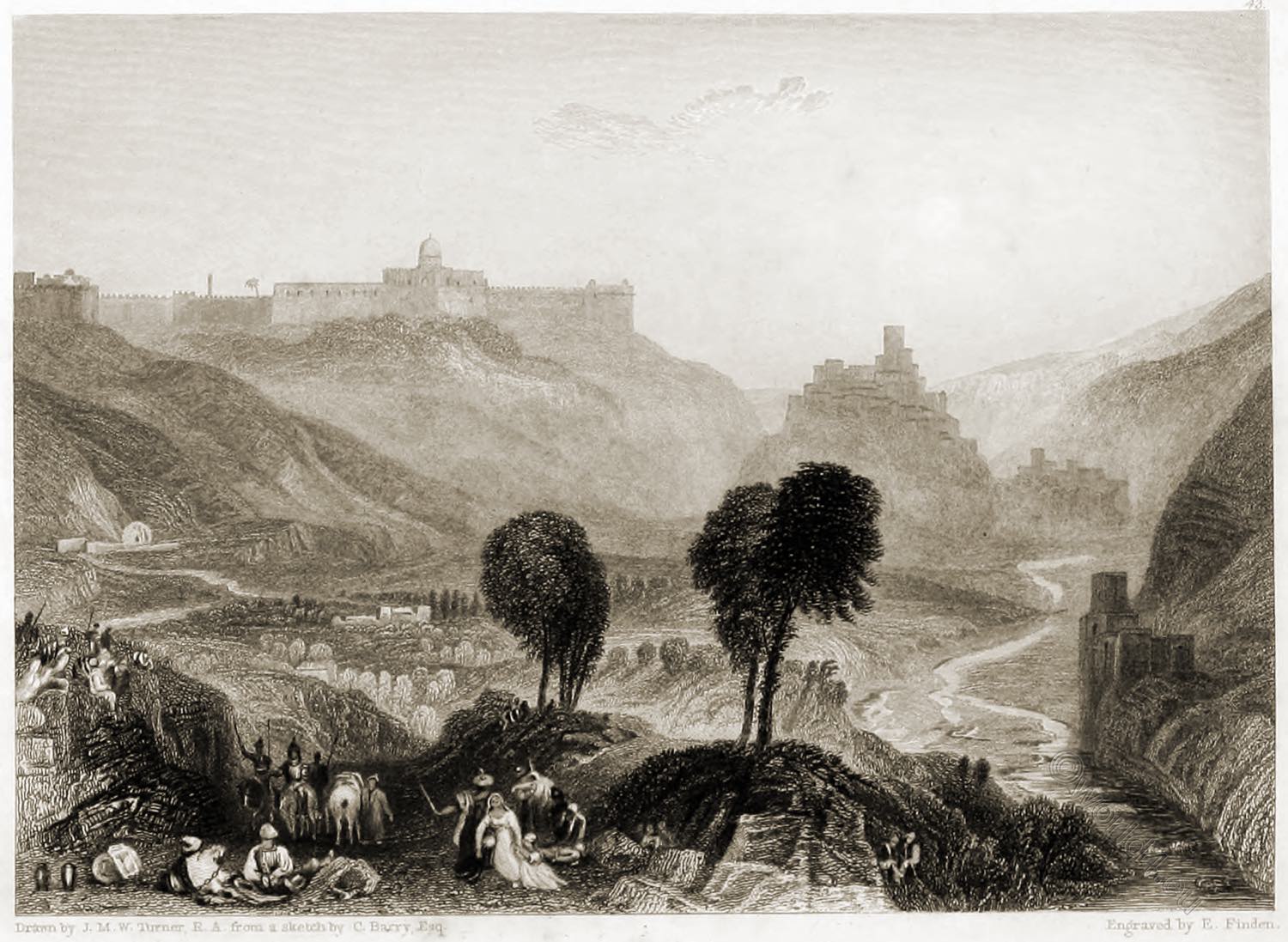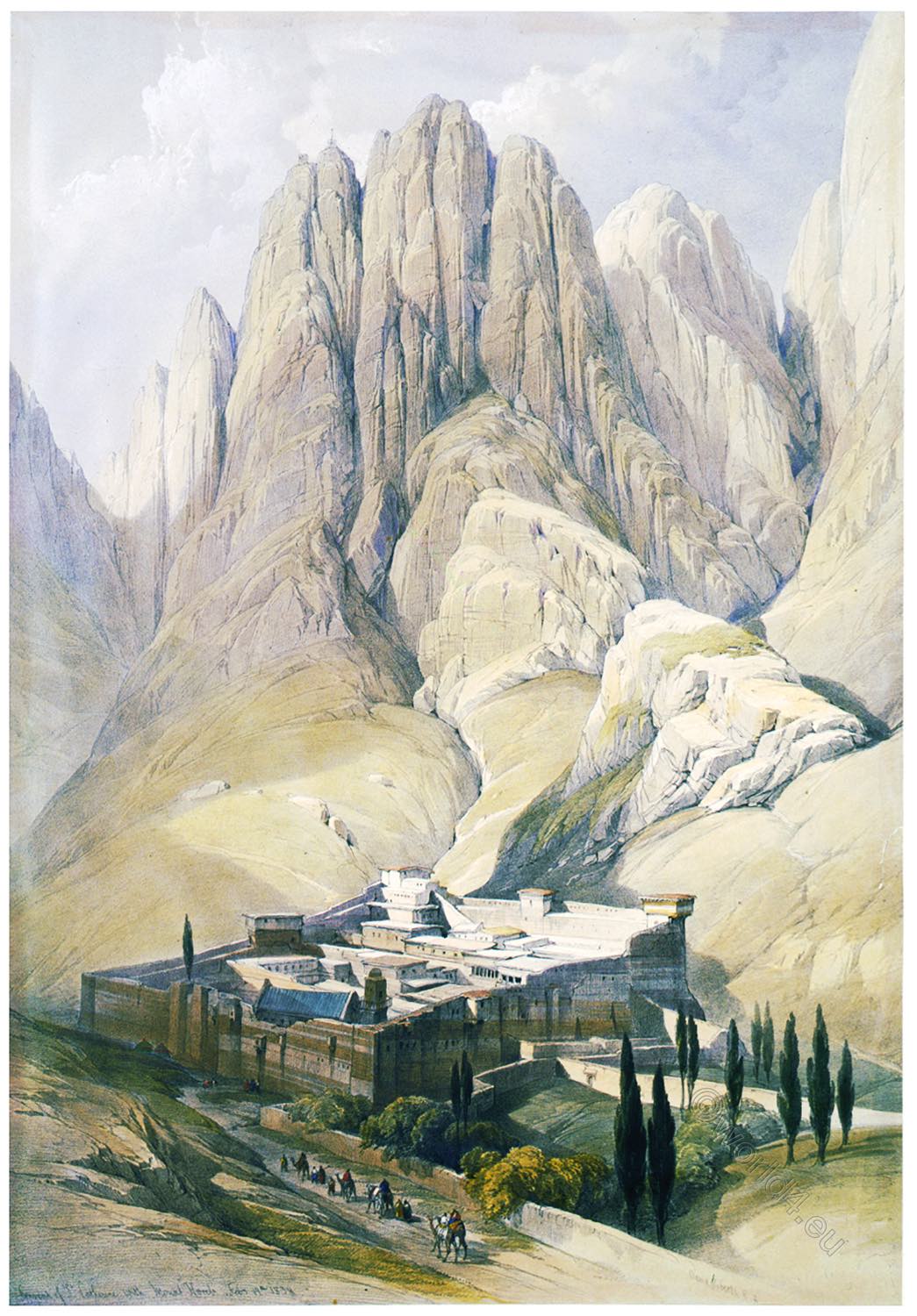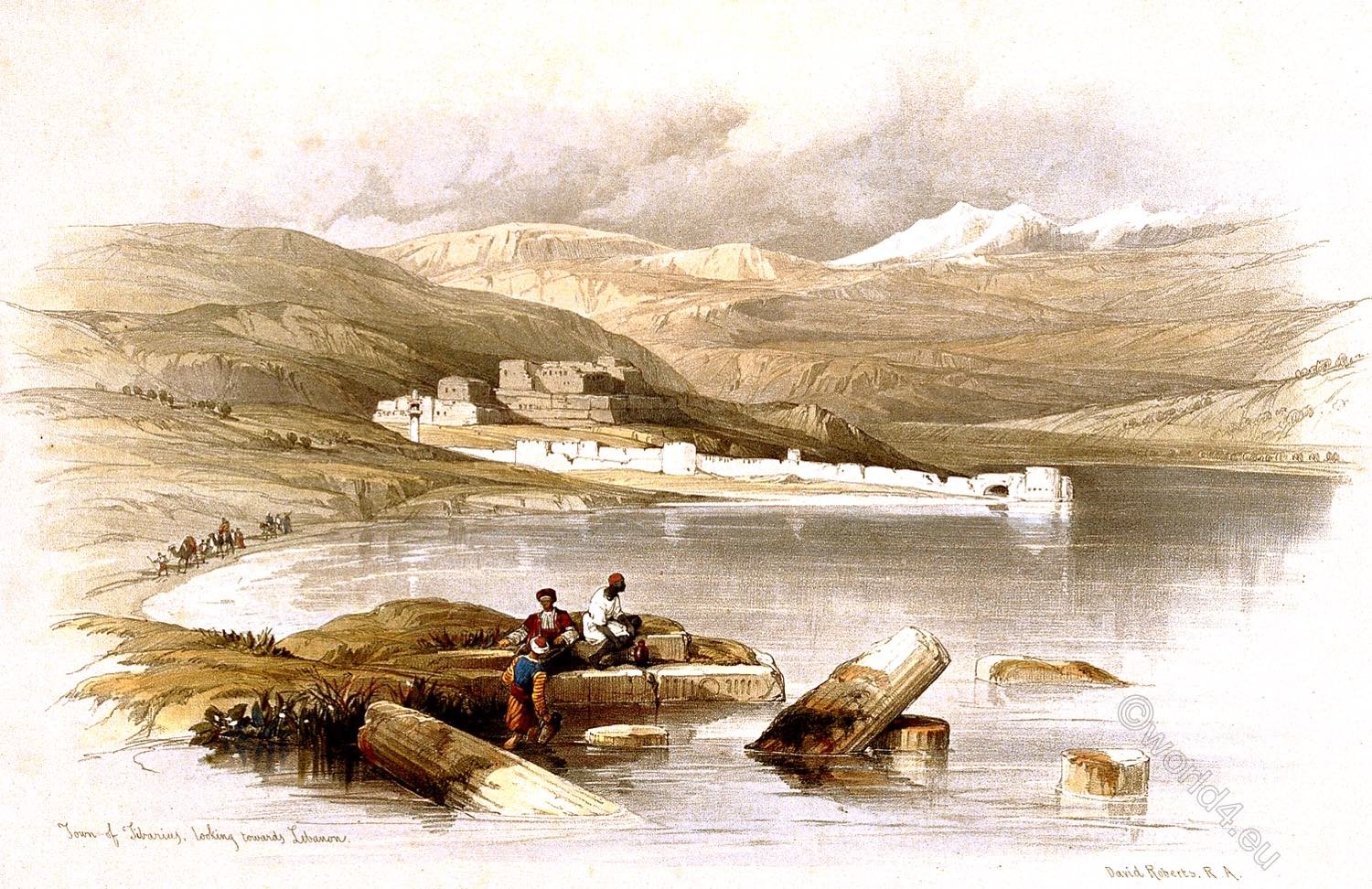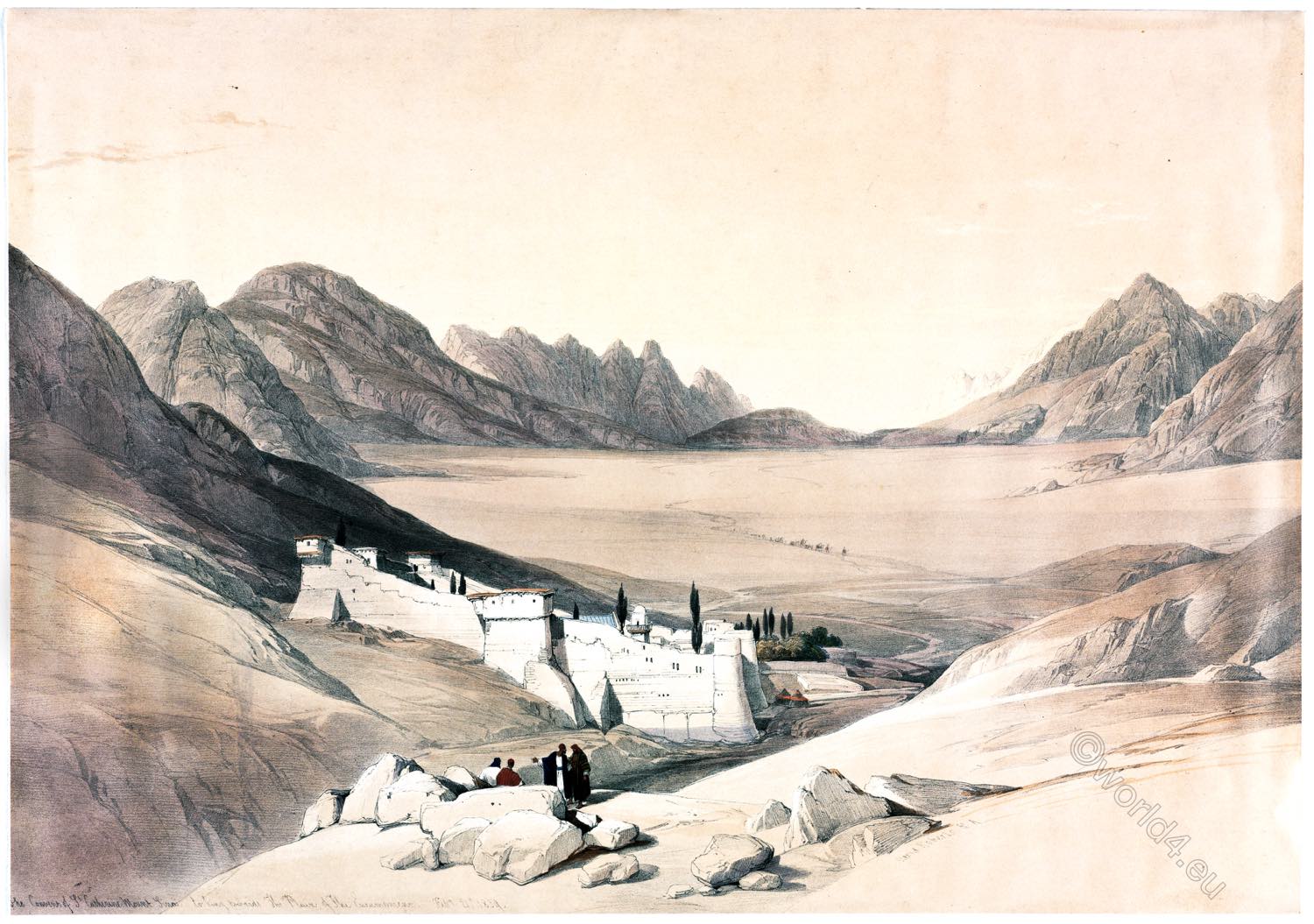The Lebanon Mountains are a mountain range that extends from the north of Lebanon about 160 km parallel to the Mediterranean coast and crosses practically the entire national territory to the southwest. The mountain range gives its name to Lebanon, whose population protected itself here against the enemies advancing from the east. The mountains served in particular as a retreat area for religious communities such as the Druze, Alawites and numerous Christian groups.

THE LARGEST OF THE CEDARS OF LEBANON.
WE shall present our readers, hereafter, with a view of the entire grove of “The Cedars.” The tree now represented is, upon the whole, the noblest of the ten or twelve “venerables” now standing. It measures forty feet in circumference near the roots. It may be observed that the natural growth of the cedar is a straight single trunk, almost like that of a Norway pine, and such are eight out of ten of the young trees in this grove; but the tree which I have represented—in common with every one of the very old ones now- is a many-stemmed, fantastic, wide-spreading giant: and I like to believe that this very irregularity of form—unfitting them for temple-timber when their contemporaries were cut—has saved them for the poet-worship of the 19th century!
With the exception of these dozen, perhaps none of the trees in the grove are of a greater age than two or three centuries: there are probably two hundred or three hundred of a much younger growth. They form a compact little forest, “standing mostly upon four small contiguous rocky knolls, within a compass of less than forty rods in diameter.” There is no underwood, but the ground is strewn thickly with the fallen leaflets and catkins. The wood is white, and has an agreeable odor, but bears no comparison with the red cedar of America.
The cedars are situated, according to Russegger, at an elevation of 6000 Paris feet above the sea-equivalent to 6400 English feet. The peaks of the mountain above rise nearly 3000 feet higher. The amphitheatre which they occupy “is of itself a great temple of nature, the most vast and magnificent of all the recesses of Lebanon.”
The peaks which tower over them retain the snows through the greater part of the year, and the grove itself is only accessible during the summer months. The spot has from time immemorial been held in some degree of sanctity; indeed, in former centuries, as Dr. Robinson informs us, “the Patriarch of the Maronites imposed various ecclesiastical penalties, and even excommunication, upon any Christian who should cut or injure the sacred trees. The Maronites used also to celebrate in the grove the festival of the Transfiguration, when the Patriarch himself officiated, and said mass before a rude altar of stones.”
We cannot wonder that so few trees which can claim very great antiquity remain upon these mountains, when we consider the high repute in which the wood was held both by the Jewish and heathen nations. The Temple of Solomon was rich in beams of cedar; David’s palace was built with it; and so lavishly was this costly wood employed in one of Solomon’s palaces, that it is called “the house of the forest of Lebanon.” Diodorus Siculus relates that Lebanon was full of cedars, and firs, and cypresses of wonderful size and beauty but at the present day only a very few localities have been authenticated as presenting any growth of these trees worth mentioning. Seetzen *), in 1805, speaks of having discovered two groves of greater extent, and so other travelers; but none, I think, report any individual trees at all to compare with the finest of these, which are usually visited.
*) Ulrich Jasper Seetzen (born 30 January 1767 in Sophiengroden, parish of Middoge, in the Lordship of Jever; died September/October 1811 near Taizz in Yemen) was a German physician, scientist, naturalist, traveller and orientalist. Inspired by news of journeys by his former fellow students Alexander von Humboldt to South America and Friedrich Konrad Hornemann to Africa, Seetzen decided to undertake his own research trips to the Near East to Arabia and Africa in 1802. Disguised as a pilgrim, he came to Cairo and Mecca and was able to make an exact plan of the Kaaba there in 1809. His medical knowledge, mastery of the Arabic language and adherence to the commandments of the Koran gave him access to the Arab world. He collected art objects, such as sculptures and mummies, as well as numerous writings, which he sent to his patron, the Duke of Saxe-Gotha-Altenburg. Much of this is still preserved today in the Gotha Research Library. Seetzen’s diaries and his vocabulary lists of the Arabic language are still important sources for Arabic studies today. He is thus one of the most important German Orientalist’s.
Source: Egypt and Palestine by Francis Frith, 1858. Publisher: James S. Virtue.
Francis Frith, sometimes Frances Frith, (born 31 October 1822 in Chesterfield, Derbyshire; died 25 February 1898 in Cannes, France) was an English photographer who became famous for his photographs of the Orient and many British cities.
Related
Discover more from World4 Costume Culture History
Subscribe to get the latest posts sent to your email.


